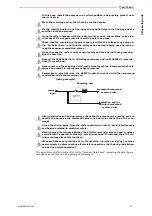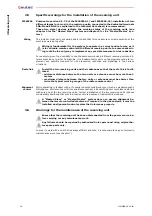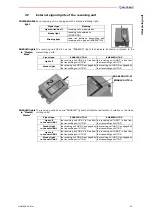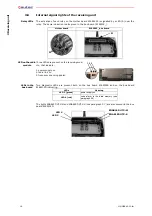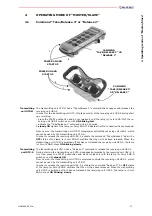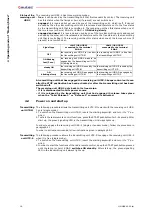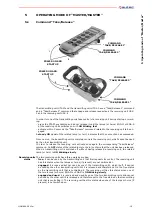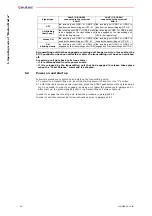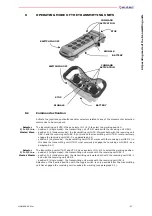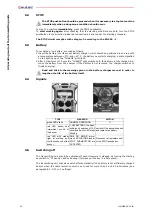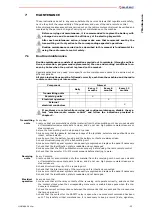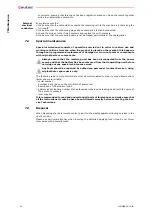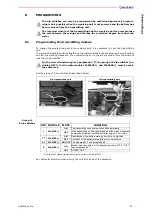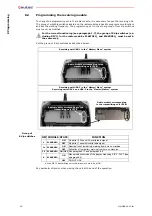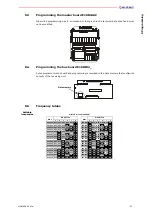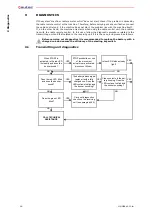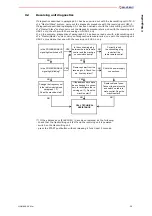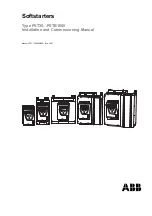
5 Operati
n
g mode of “Master/
Master”
- 19 -
LIMM&SA0-00.fm
5
OPERATING MODE OF “MASTER/MASTER”
5.1
Command “Take/Release”
POWER ON AND
START UP
1
2
COMMAND
“TAKE/RELEASE 2”
1
2
POWER ON AND
START UP
COMMAND
“TAKE/RELEASE 2”
COMMAND
“TAKE/RELEASE 1”
COMMAND
“TAKE/RELEASE 1”
The transmitting unit UTX-M and the transmitting unit UTX-S have a “Take/Release 1” command
and a “Take/Release 2” command that engage and release respectively the receiving unit URX-
1 and the receiving unit URX-2.
In order for one of the transmitting units take control of a receiving unit during start up or work-
ing:
- press the START pushbutton and do not release it until the lamps (or horns) ENA-M or ENA-S
of the receiving units switches on with
ON blinking fast
- activate within 3 seconds the “Take/Release” command related to the receiving unit to be en-
gaged
A
steady ON
signal of the related lamp (or horn) indicates that the connection has succeeded.
From now on, the transmitting unit completely controls the receiving unit, which cannot be used
by the other transmitting unit.
In order to release the receiving unit, activate once again the corresponding “Take/Release”
command. An
OFF
status of the related lamp (or horn) confirms that the unit has been released.
When a transmitting unit is switched off without having released a receiving unit, the related
lamp (or horn) is
ON blinking slowly
.
Receiving units
status
The two receiving units have three working modes:
-
free
: it can be used by the transmitting unit that first requests its control. The receiving unit
has this status when the lamps or horns (if present) are not switched on
-
engaged
: it is reserved but not used by one of the transmitting units, which is off. It cannot
be used by the other transmitting unit until it is released and therefore set to the free status
by the transmitting unit that is controlling it. The receiving unit has this status when one of
the two lamps (or horns) ENA-M or ENA-S is
ON blinking slowly
-
engaged and used
: it is reserved and used by one of the two transmitting units and cannot
be used by the other until it is released and therefore set to the free status by the transmitting
unit that is controlling it. The receiving unit has this status when one of the lamps or horns (if
present) is not switched on.









